Satellite isoprene retrievals constrain emissions and atmospheric oxidation
- PMID: 32908268
- PMCID: PMC7490801
- DOI: 10.1038/s41586-020-2664-3
Satellite isoprene retrievals constrain emissions and atmospheric oxidation
Abstract
Isoprene is the dominant non-methane organic compound emitted to the atmosphere1-3. It drives ozone and aerosol production, modulates atmospheric oxidation and interacts with the global nitrogen cycle4-8. Isoprene emissions are highly uncertain1,9, as is the nonlinear chemistry coupling isoprene and the hydroxyl radical, OH-its primary sink10-13. Here we present global isoprene measurements taken from space using the Cross-track Infrared Sounder. Together with observations of formaldehyde, an isoprene oxidation product, these measurements provide constraints on isoprene emissions and atmospheric oxidation. We find that the isoprene-formaldehyde relationships measured from space are broadly consistent with the current understanding of isoprene-OH chemistry, with no indication of missing OH recycling at low nitrogen oxide concentrations. We analyse these datasets over four global isoprene hotspots in relation to model predictions, and present a quantification of isoprene emissions based directly on satellite measurements of isoprene itself. A major discrepancy emerges over Amazonia, where current underestimates of natural nitrogen oxide emissions bias modelled OH and hence isoprene. Over southern Africa, we find that a prominent isoprene hotspot is missing from bottom-up predictions. A multi-year analysis sheds light on interannual isoprene variability, and suggests the influence of the El Niño/Southern Oscillation.
Conflict of interest statement
COMPETING INTEREST DECLARATION:
The authors declare no competing interests.
Figures
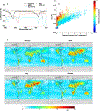


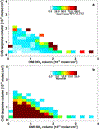


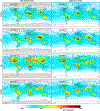
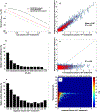

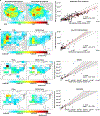

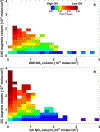


References
-
- Guenther AB et al. The Model of Emissions of Gases and Aerosols from Nature version 2.1 (MEGAN2.1): an extended and updated framework for modeling biogenic emissions. Geosci. Model Dev 5, 1471–1492, doi:10.5194/gmd-5-1471-2012 (2012). - DOI
-
- Saunois M et al. The global methane budget 2000–2012. Earth Syst. Sci. Data 8, 697–751, doi:10.5194/essd-8-697-2016 (2016). - DOI
-
- Huang GL et al. Speciation of anthropogenic emissions of non-methane volatile organic compounds: a global gridded data set for 1970–2012. Atmos. Chem. Phys 17, 7683–7701, doi:10.5194/acp-17-7683-2017 (2017). - DOI
-
- Trainer M et al. Models and observations of the impact of natural hydrocarbons on rural ozone. Nature 329, 705–707, doi:10.1038/329705a0 (1987). - DOI
-
- Hewitt CN et al. Ground-level ozone influenced by circadian control of isoprene emissions. Nat. Geosci 4, 671–674, doi:10.1038/ngeo1271 (2011). - DOI
Publication types
MeSH terms
Substances
Grants and funding
LinkOut - more resources
Full Text Sources

